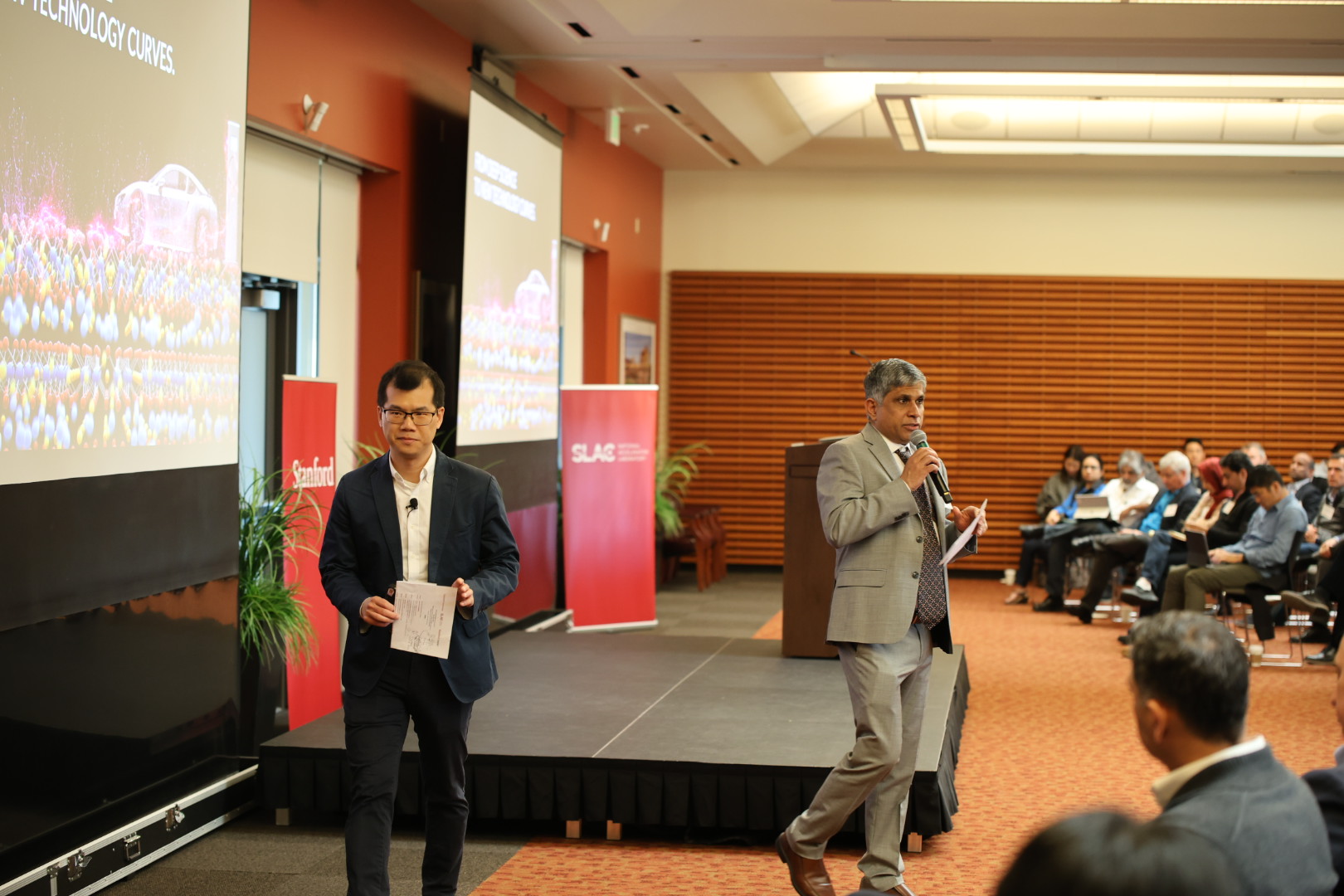The SLAC National Accelerator Laboratory remains an unknown part of Stanford for many students, despite its groundbreaking research. Known primarily for its particle accelerator, the center also hosts research in ultrafast science and bioimaging. Now, it will also host research at the cutting edge of energy storage technology.
Stanford organized the official launch of the Battery Center at SLAC on Thursday. The invite-only event was hosted at the Graduate School of Business (GSB) campus and featured presentations from leadership at SLAC, two Nobel laureates, members of the Department of Energy, researchers at national labs and industry leaders.
Will Chueh, Director of the SLAC-Stanford Battery Center and professor of materials science & engineering and energy science & engineering, introduced the center’s vision and goals.
“We are at the intersection of several very unique organizations,” Chueh said. “This allows us to open the revolving door in a very positive way. So what we’re trying to accomplish here is to connect the science to the technology, and then to the solution and back. We can only do this in partnership with Silicon Valley and the greater industry.”
In a separate interview with The Daily, Chueh elaborated on his analogy of the revolving door.
“Working backwards, what are the solutions needed? And what are the deep science advancements that we can do at the center?” Chueh said. “Right now, it’s about taking our capabilities at Stanford and SLAC, and applying it towards solving problems highly relevant to the deployment of energy storage.”
Chueh serves as SLAC-Stanford Battery Center’s Director, setting its vision. Alongside him is Jagjit Nanda, a distinguished scientist at SLAC who serves as the Executive Director, working to execute the center’s goals.
The Battery Center will be housed in the newly constructed Arrillaga Science Center on SLAC campus. “It will bring together the resources and expertise of the national lab, the University and Silicon Valley to accelerate the deployment of batteries and other energy storage solutions as part of the energy transition that’s essential for addressing climate change,” according to a press statement from SLAC released Thursday morning.
After speeches from the directors, the event moved to keynote presentations by leading battery scientists. During a discussion about the future of batteries, Nobel laureates Steven Chu and Stan Whittingham agreed that lithium-ion batteries will continue to be key drivers in the shift to a net-zero economy.
“As we go along, lithium-ion batteries will dominate for the next five to 10 years,” Whittingham said.
However, lithium-ion batteries are not without their problems, especially manufacturing inefficiencies, according to Wittingham.
“We’ve got to find a new manufacturing technology, which has not changed in the last 30 years,” Whittingham said. “Right now it takes 60 to 80 kilowatt hours [of electricity] to make one kilowatt hour of battery capacity.”
In the second keynote presentation, Chu highlighted the issue of scaling in the electric vehicle industry.
“It takes four or five years to [implement] any battery in an EV,” Chu said, suggesting that mass production of currently cutting-edge battery chemistry is far in the future.
Scaling battery implementation at speed continued to be the main discussion topic in the following panel on translation battery research and innovation, featuring industry experts, leading battery scientists and policymakers. Celina Mikolajczak, Chief Battery Technology Officer at Lyten, highlighted the challenge of scaling at speed.
“Take Tesla for example, the whole story of batteries takes about 20 years to [implement in] a car and about 30 years to [implement in] a Gigafactory,” Mikolajczak said. “That’s a market driven solution. It’s much more comfortable than five to seven years, but climate change doesn’t allow us that luxury anymore.”
With dwindling time remaining to mitigate the effects of global warming, rapidly inventing and implementing new battery technologies to store energy from intermittent renewable sources and improving energy density for electric vehicles is crucial, according to Chueh. The SLAC-Stanford Battery Center aims to address this challenge by fostering research that is translatable to the industry.
“The mindset 10, 20 years ago has been about discovery-based science and curiosity, but on the topics of energy and sustainability, I think that is not sufficient,” Chueh said. “The answer will start in academia, but it’s important that it then translates into how we’re solving it in industry. And you’re going to ask what is the missing knowledge, which will then inspire our students at the center.”
A goal of the SLAC-Stanford Battery Center is to spark conversation among colleagues and industry, Cheuh explained.
The event then moved to CEMEX Auditorium, where panels of researchers, regulators and executives discussed circularity in battery manufacturing, challenges and opportunities in long-duration energy storage and the commercialization of technology developed in universities.
The event closed with remarks by Steve Eglash, Director of the Applied Energy Division at SLAC, followed by a battery research poster session, featuring Ph.D. student projects that will be relevant to the new center. In a separate interview with The Daily, Eglash highlighted the importance of the new SLAC-Stanford Battery Center.
“I think this is an opportunity to bring together battery research at SLAC and Stanford,” Eglash said. “We can turn it into an ecosystem, a community, where the whole can truly be greater than the sum of its parts.”
The event was initially scheduled to be hosted on-site at SLAC. Spokesperson Manuel Gnida explained that the venue shifted to GSB campus due to rainwater damage to the SLAC auditorium.
A previous version of this article incorrectly wrote the official title of “SLAC-Stanford Battery Center” as “SLAC Battery Center”. The Daily regrets this error.
